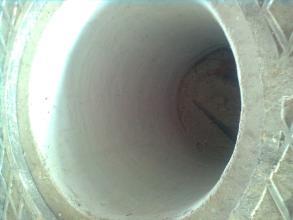How to improve the temperature resistance of intermediate frequency furnace lining
1. Remove the mica paper when making the furnace.
2. Treatment of crystalline quartz sand for furnace building.
3. Hand selection: mainly to remove impurities such as hard blocks.
4. Magnetic separation: Magnetic impurities must be completely removed.
5. Dry ramming: It must be slowly dried at 200-300 degrees Celsius for more than 4 hours.
6. Selection of binder for medium frequency electric furnace: use boron anhydride (B2O3) instead of boric acid (H3BO3) as binder, and the addition amount is 1.1%-1.5%.
7. Selection and ratio of furnace building materials.
8. Selection of furnace building materials: It should be noted that not all quartz sand with SiO2 greater than or equal to 99% can be used as the lining material of the intermediate frequency furnace of the induction furnace. The important thing is the size of the grain in time. The fewer lattice defects, the better. (For example, crystal quartz sand, SiO2 has high purity, and the appearance is white and transparent. The larger the furnace capacity, the higher the requirements for crystal grains.
9. Proportion: Quartz sand ratio for intermediate frequency furnace lining: 6-8 mesh, 10 percent-15 percent, 10-20 mesh, 25 percent-30 percent, 20-40 mesh, 25 percent-30 percent, 270 mesh, 25 percent-30 percent.
10. Furnace lining knotting: The quality of the intermediate frequency furnace lining knotting is directly related to the sintering quality. When the knotted sand particles are evenly distributed, segregation will not occur, the density of the knotted sand layer is high, and the probability of cracking after sintering is reduced. It is beneficial to prolong the service life of the induction furnace lining.
11. Knotting the bottom of the furnace: the thickness of the bottom of the furnace is about 280mm, and the sand is filled in 4 times. When manually knotting, it can prevent uneven density in various places and the lining after baking and sintering is not dense. Therefore, the thickness of the feed must be strictly controlled. Generally The thickness of sand filling is not more than 100mm\/time, and the furnace wall is controlled within 60mm. Many people work in shifts, with 4-6 people per shift. Each time the knot is tied for 30 minutes, the shift rotates slowly around the furnace to avoid uneven density.
12. Knot the furnace wall: the thickness of the furnace lining is 110-120mm. Add dry knotting material in batches, evenly distribute, the thickness of the filler is not more than 60 mm, (manually) knot for 15 minutes, until it is flush with the upper edge of the induction coil. After knotting Do not take out the crucible mold, and play the role of induction heating during drying and sintering.

Related News
- Introduction of construction method of ramming material in intermediate frequency furnace
- How to choose the material of furnace lining
- The difference between rammer and castable
- Application direction of intermediate frequency furnace refining
- Introduction to the construction method of dry ramming material
- Do you know the production process and control points of breathable bricks?
- The application of argon blowing technology at the bottom of the intermediate frequency furnace
- Method for prolonging service life of intermediate frequency furnace lining
- In addition to diffused breathable bricks, there are those types of breathable bricks
- What are the advantages of coil cement
- How to properly apply ramming mix
- How to improve the service life of breathable bricks
- Sintering method of intermediate frequency furnace lining
- What are the requirements for the production materials of breathable bricks?
- Composition and function of neutral ramming mass
- What material is the surface layer of the breathable brick?
- What type of ramming material is used in industrial casting?
- Precautions for construction of coil cement
- What material is used for the lining of the intermediate frequency furnace?
- Matters needing attention in the knotting process of ramming material


